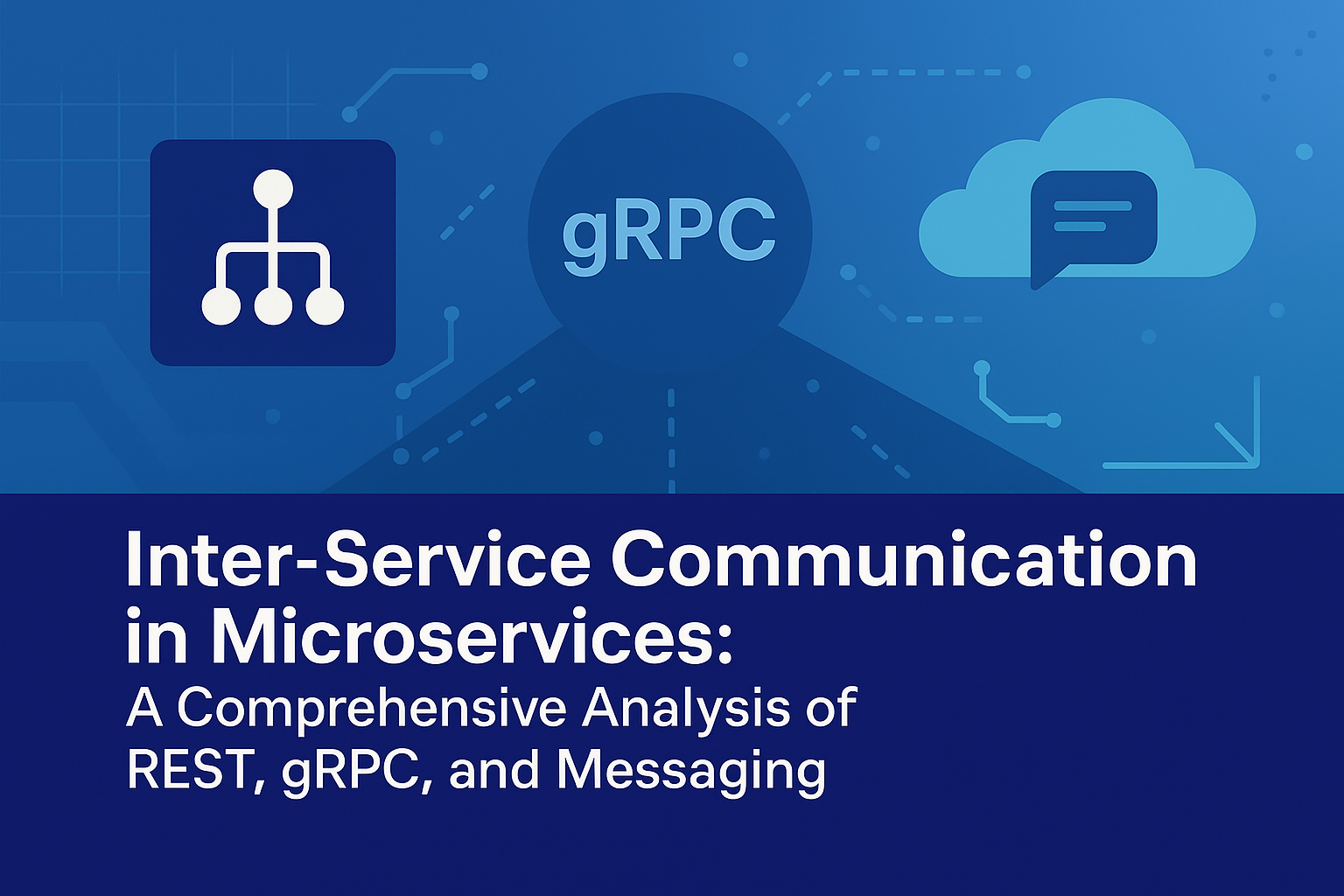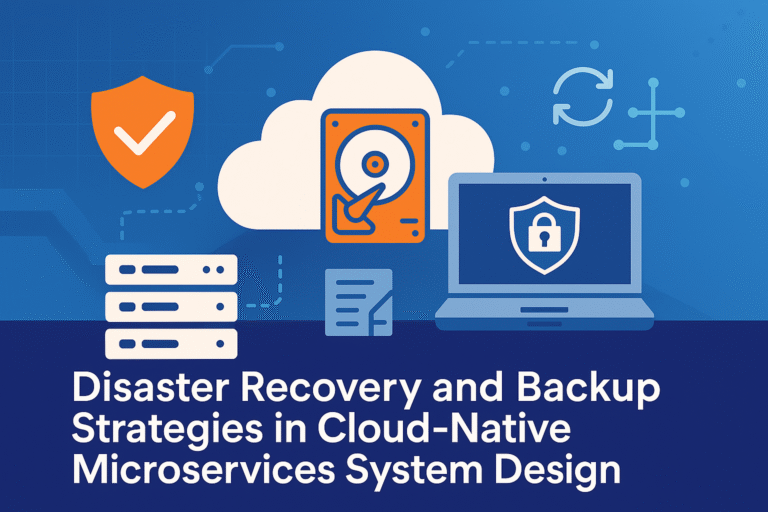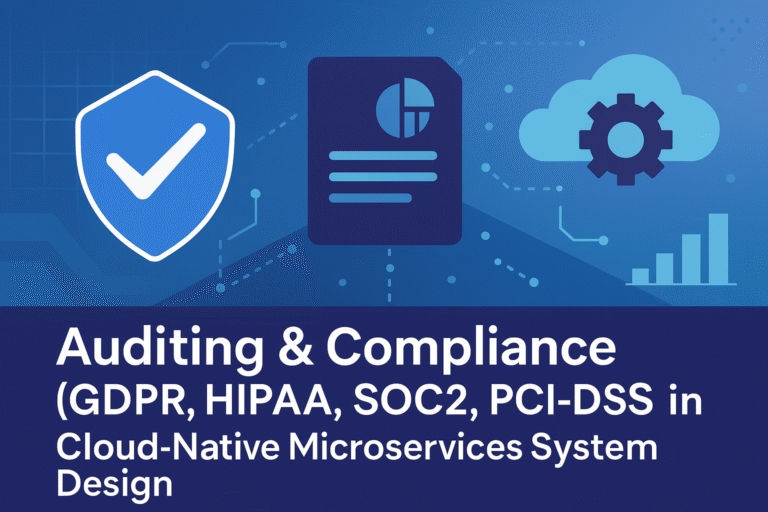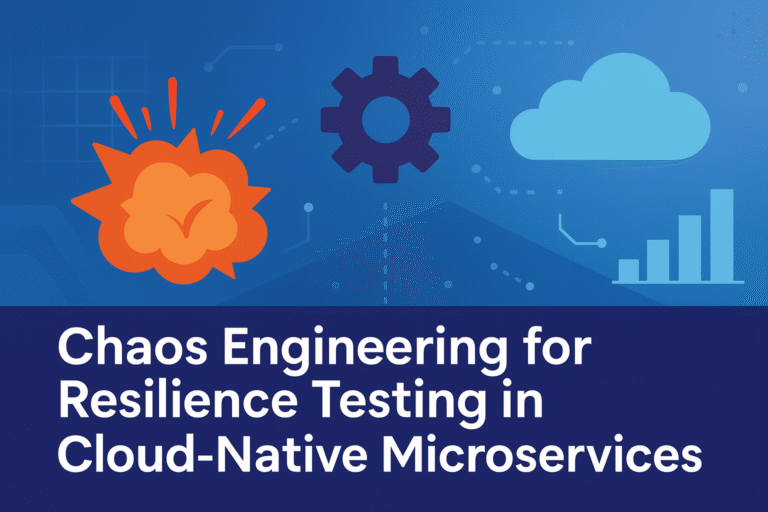Introduction
In microservices architectures, inter-service communication is a critical component that enables loosely coupled, independently deployable services to collaborate effectively to deliver cohesive application functionality. Unlike monolithic architectures, where components interact through in-memory function calls, microservices communicate over networks, introducing challenges such as latency, reliability, and data consistency. The choice of communication method—REST, gRPC, or Messaging (e.g., event-driven via message brokers)—significantly impacts scalability, performance, maintainability, and fault tolerance. This analysis provides a detailed examination of these communication methods in the context of microservices, exploring their mechanisms, use cases, advantages, limitations, and trade-offs. It integrates foundational distributed systems concepts from your prior conversations, including the CAP Theorem (balancing consistency, availability, and partition tolerance), consistency models (strong vs. eventual), consistent hashing (for load distribution), idempotency (for reliable operations), unique IDs (e.g., Snowflake for tracking), heartbeats (for liveness detection), failure handling (e.g., circuit breakers), single points of failure (SPOFs) avoidance, checksums (for data integrity), GeoHashing (for location-aware routing), rate limiting (for traffic control), Change Data Capture (CDC) (for data synchronization), load balancing (for resource optimization), quorum consensus (for coordination), multi-region deployments (for global resilience), capacity planning (for resource allocation), backpressure handling (to manage load), ETL/ELT pipelines (for data integration), exactly-once vs. at-least-once semantics (for event delivery), event-driven architecture (EDA) (for loose coupling), and microservices design best practices (e.g., loose coupling, decentralized data). Drawing on your interest in e-commerce integrations, API scalability, and resilient systems (e.g., your queries on saga patterns, database comparisons, EDA, and microservices design), this guide offers a structured framework for architects to select and implement communication methods that align with modern distributed system requirements, ensuring scalability, reliability, and maintainability.
Mechanisms of Inter-Service Communication
1. REST (Representational State Transfer)
REST is a stateless, resource-based architectural style that uses HTTP methods (e.g., GET, POST, PUT, DELETE) for communication, typically over JSON or XML payloads.
- Core Mechanism:
- Protocol: HTTP/1.1 or HTTP/2, using standard verbs to interact with resources (e.g., GET /orders/{id}).
- Data Format: JSON (most common) or XML, with payloads typically 1–10KB.
- Synchronous: Client sends a request and waits for a response, introducing blocking behavior.
- API Design: Follows RESTful principles (e.g., stateless, resource-oriented endpoints like /v1/orders).
- Load Balancing: Uses consistent hashing in API gateways (e.g., NGINX, AWS API Gateway) to distribute requests, as discussed in your reverse proxy query.
- Failure Handling: Implements retries with idempotency (e.g., using unique request IDs) and circuit breakers (e.g., Hystrix) to handle transient failures.
- Security: Secured with TLS 1.3 and OAuth 2.0/JWTs, as per your API scalability query.
- Integration with Concepts:
- CAP Theorem: Favors CP (consistency and partition tolerance) due to synchronous nature, ensuring strong consistency but potentially blocking availability.
- Idempotency: Critical for safe retries (e.g., retrying POST /orders with unique IDs).
- Checksums: SHA-256 for payload integrity.
- Rate Limiting: Token Bucket at API gateway (e.g., 10,000 req/s).
- Mathematical Foundation:
- Latency: Request–response cycle = network_latency + processing_time (e.g., 20 ms network + 10 ms processing = 30 ms)
- Throughput: Limited by synchronous blocking (e.g., 10,000 req/s with 10 instances)
- Availability: 1 − (1 − service_availability)N (e.g., 99.99% with 3 replicas at 99.9%)
2. gRPC (Google Remote Procedure Call)
gRPC is a high-performance, open-source framework that uses HTTP/2 and Protocol Buffers (Protobuf) for efficient, bidirectional communication.
- Core Mechanism:
- Protocol: HTTP/2 for multiplexing and low-latency streams, reducing overhead vs. HTTP/1.1.
- Data Format: Protobuf, a binary format 5–10x smaller than JSON (e.g., 0.1–1KB payloads).
- Synchronous and Asynchronous: Supports unary (request-response), server streaming, client streaming, and bidirectional streaming.
- Service Definition: Defined via Protobuf schemas (e.g., service OrderService { rpc GetOrder (OrderRequest) returns (OrderResponse); }).
- Load Balancing: Uses consistent hashing on gRPC clients or proxies (e.g., Envoy).
- Failure Handling: Supports retries, idempotency (via request IDs), and circuit breakers.
- Security: Uses TLS 1.3 and supports OAuth 2.0.
- Integration with Concepts:
- CAP Theorem: CP-oriented, similar to REST, but streaming supports AP scenarios.
- Idempotency: Ensures safe retries for unary calls.
- GeoHashing: Useful for routing in location-aware services (e.g., ride-sharing).
- Quorum Consensus: Used in gRPC load balancers for coordination.
- Mathematical Foundation:
- Latency: Lower than REST due to HTTP/2 multiplexing (e.g., 10 ms network + 5 ms processing = 15 ms)
- Throughput: Higher than REST (e.g., 50,000 req/s with 10 instances due to compact payloads)
- Scalability: Enhanced by streaming and multiplexing, reducing overhead
3. Messaging (Event-Driven Communication)
Messaging uses asynchronous event-driven communication via message brokers (e.g., Kafka, RabbitMQ, Pulsar) to decouple services, aligning with your EDA query.
- Core Mechanism:
- Protocol: Broker-specific (e.g., Kafka’s TCP-based protocol, AMQP for RabbitMQ).
- Data Format: JSON, Avro, or Protobuf, published to topics or queues (e.g., Kafka topic “orders”).
- Asynchronous: Producers publish events without waiting for responses; consumers process events independently.
- Event Brokers: Kafka (stream processing), RabbitMQ (queues), Pulsar (hybrid). Brokers use consistent hashing for partitioning and replication (e.g., 3 replicas) to avoid SPOFs.
- Delivery Semantics: Supports exactly-once (Kafka transactions), at-least-once (deduplication via idempotency), or at-most-once, as per your semantics query.
- Data Synchronization: Uses CDC (e.g., Debezium) to capture database changes as events.
- Failure Handling: Retries, DLQs, and circuit breakers ensure reliability; heartbeats monitor consumer health.
- Integration with Concepts:
- CAP Theorem: Favors AP (availability and partition tolerance) with eventual consistency (10–100ms lag).
- Backpressure Handling: Buffering or throttling (e.g., Token Bucket), as per your backpressure query.
- GeoHashing: Routes events by location (e.g., IoT sensor data).
- Quorum Consensus: Ensures broker reliability (e.g., Kafka’s KRaft).
- Mathematical Foundation:
- Throughput: N × P × Tp (e.g., 10 brokers × 50 partitions × 2,000 events/s = 1 M events/s)
- Latency: End-to-end = produce + route + consume (e.g., 1 ms + 5 ms + 4 ms = 10 ms)
- Event Lag: backlog / consume_rate (e.g., 10,000 events / 100,000 events/s = 100 ms)
Detailed Comparison: REST, gRPC, and Messaging
REST
Advantages:
- Simplicity: Leverages HTTP, widely understood, with mature tools (e.g., Postman, Swagger).
- Interoperability: JSON is human-readable and compatible with diverse clients (e.g., web, mobile).
- Mature Ecosystem: Extensive libraries (e.g., Spring Boot, as per your .NET Web API query) and standards (e.g., OpenAPI).
- Statelessness: Simplifies scaling and load balancing (e.g., NGINX with consistent hashing).
Limitations:
- Latency: Higher due to HTTP/1.1 overhead (e.g., 30–50ms per call).
- Tight Coupling: Synchronous calls create dependencies (e.g., order service waits for payment service response).
- Scalability Limits: Blocking calls limit throughput (e.g., 10,000 req/s max with 10 instances).
- Payload Overhead: JSON verbosity increases network usage (e.g., 10KB vs. 1KB for Protobuf).
Use Cases:
- Public-facing APIs (e.g., Shopify order retrieval in your e-commerce system).
- Simple, synchronous workflows (e.g., user authentication).
- Cross-organization integration (e.g., RESTful QuickBooks API).
gRPC
Advantages:
- High Performance: HTTP/2 and Protobuf reduce latency (e.g., 15ms vs. 30ms for REST) and payload size (5–10x smaller).
- Streaming: Supports bidirectional streaming for real-time apps (e.g., chat or live updates).
- Strong Typing: Protobuf schemas enforce strict contracts, reducing errors (e.g., 20% fewer integration issues).
- Multiplexing: Handles multiple requests over a single connection, improving throughput (e.g., 50,000 req/s).
Limitations:
- Complexity: Requires Protobuf knowledge and gRPC tooling, increasing learning curve (10–15% more training).
- Limited Browser Support: HTTP/2 and Protobuf are less suited for web clients (requires gRPC-Web).
- Debugging: Binary payloads are harder to inspect than JSON.
- Ecosystem: Less mature than REST, with fewer tools.
Use Cases:
- High-performance internal services (e.g., payment processing in your e-commerce system).
- Real-time applications (e.g., live inventory updates).
- Low-latency microservices communication (e.g., fraud detection).
Messaging
Advantages:
- Loose Coupling: Asynchronous events decouple services (e.g., order service publishes “OrderPlaced” without calling inventory), as per your EDA query.
- High Scalability: Brokers scale linearly (e.g., 1M events/s with 10 Kafka brokers).
- Fault Tolerance: DLQs, retries, and replication ensure reliability (e.g., 99.999% uptime with 3 replicas).
- Event Sourcing: Enables state reconstruction and auditing (e.g., replay Kafka logs).
Limitations:
- Complexity: Managing brokers (e.g., Kafka, RabbitMQ) adds 20–30% DevOps overhead.
- Eventual Consistency: Risks staleness (10–100ms lag), challenging for transactions.
- Storage Costs: Event logs require significant storage (e.g., 1TB/day for 1B events at 1KB each, costing $0.05/GB/month).
- Monitoring: Requires distributed tracing (e.g., Jaeger) for event flows.
Use Cases:
- Asynchronous workflows (e.g., order processing in your e-commerce system).
- Real-time analytics (e.g., user behavior tracking).
- Event-driven systems (e.g., IoT sensor processing, as per your EDA query).
Performance Metrics and Trade-Offs
Performance Comparison
| Aspect | REST | gRPC | Messaging |
|---|---|---|---|
| Latency | 30–50ms (HTTP/1.1) | 10–20ms (HTTP/2) | 10ms (broker-based) |
| Throughput | 10,000 req/s (10 instances) | 50,000 req/s (10 instances) | 1M events/s (10 brokers) |
| Scalability | Moderate (synchronous) | High (streaming) | Very high (asynchronous) |
| Payload Size | 1–10KB (JSON) | 0.1–1KB (Protobuf) | 0.1–10KB (JSON/Avro) |
| Consistency | Strong (CP) | Strong (CP) | Eventual (AP) |
| Complexity | Low | Medium | High |
Trade-Offs
- Performance vs. Simplicity:
- REST: Simple but slower (30–50ms latency) and less scalable.
- gRPC: Faster (15ms) and more scalable but complex (Protobuf, HTTP/2).
- Messaging: Highly scalable (1M events/s) but complex (broker management).
- Decision: Use REST for simple APIs, gRPC for performance-critical services, messaging for asynchronous scalability.
- Interview Strategy: Propose REST for public APIs, gRPC for internal services, messaging for event-driven workflows.
- Coupling vs. Consistency:
- REST/gRPC: Tightly coupled with strong consistency, suitable for transactions (e.g., payments).
- Messaging: Loosely coupled with eventual consistency, ideal for analytics but risks staleness.
- Decision: Use REST/gRPC for strong consistency, messaging for loose coupling.
- Interview Strategy: Highlight REST/gRPC for banking, messaging for order processing.
- Scalability vs. Cost:
- REST/gRPC: Lower infrastructure costs ($100–500/month) but limited scalability.
- Messaging: Higher costs ($500–2,000/month for brokers) but massive scalability.
- Decision: Use REST/gRPC for small-scale, messaging for large-scale.
- Interview Strategy: Justify messaging for global e-commerce, REST for regional startups.
- Global vs. Local Optimization:
- REST/gRPC: Simpler for local deployments but higher latency globally (50–100ms).
- Messaging: Supports multi-region deployments with low latency (< 50ms) but adds complexity.
- Decision: Use messaging for global apps, REST/gRPC for regional.
- Interview Strategy: Propose messaging for Uber, REST/gRPC for local retailers.
Integration with Prior Concepts
- CAP Theorem: REST/gRPC favor CP (strong consistency), messaging favors AP (eventual consistency), as per your EDA query.
- Consistency Models: REST/gRPC ensure strong consistency; messaging uses eventual consistency with CDC or saga patterns, as per your saga query.
- Consistent Hashing: Used in REST/gRPC load balancers (e.g., NGINX) and messaging brokers (e.g., Kafka partitions).
- Idempotency: Critical for REST/gRPC retries and messaging deduplication (e.g., Snowflake IDs).
- Heartbeats: Monitor service liveness in all methods (< 5s detection).
- Failure Handling: Circuit breakers and retries for REST/gRPC, DLQs for messaging.
- SPOFs: Avoided via replication (e.g., 3 Kafka replicas, load-balanced REST/gRPC instances).
- Checksums: SHA-256 ensures payload integrity across all methods.
- GeoHashing: Routes requests/events in location-aware services (e.g., ride-sharing).
- Rate Limiting: Token Bucket caps traffic (e.g., 10,000 req/s for REST, 100,000 events/s for messaging).
- Load Balancing: Least Connections for REST/gRPC, partitioning for messaging.
- Multi-Region Deployments: Supported by messaging (e.g., Kafka replication), challenging for REST/gRPC.
- Backpressure Handling: Buffering/throttling in messaging, less critical in REST/gRPC.
- EDA: Messaging aligns with EDA for loose coupling, as per your prior query.
Real-World Use Cases
1. E-Commerce Order Processing
- Context: An e-commerce platform (e.g., integrating Shopify, Amazon, as per your e-commerce query) processes 100,000 orders/day, needing loose coupling and scalability.
- Implementation:
- Messaging: Kafka for asynchronous “OrderPlaced” events (20 partitions, exactly-once semantics). Order service publishes to “orders” topic, consumed by inventory and shipping services. CDC syncs PostgreSQL updates, GeoHashing routes by region.
- REST: Order service exposes REST API (/v1/orders) for synchronous queries, secured with OAuth 2.0.
- gRPC: Inventory service uses gRPC for low-latency stock updates (e.g., unary calls).
- Metrics: Messaging: < 10ms latency, 100,000 events/s; REST: 30ms latency, 10,000 req/s; gRPC: 15ms latency, 20,000 req/s.
- Trade-Off: Messaging for scalability, REST for simplicity, gRPC for performance.
- Strategic Value: Combines messaging for asynchronous workflows, REST for external APIs, and gRPC for internal efficiency.
2. Financial Transaction System
- Context: A bank processes 500,000 transactions/day, requiring strong consistency and reliability, as per your tagging system query.
- Implementation:
- gRPC: Payment service uses unary gRPC calls for low-latency transaction validation (e.g., 15ms).
- Messaging: Kafka for “TransactionProcessed” events with exactly-once semantics, consumed by fraud detection and ledger services. CDC syncs ledger updates.
- REST: Exposes transaction history API for external clients (e.g., /v1/transactions).
- Metrics: gRPC: < 15ms latency, 20,000 req/s; Messaging: < 10ms, 500,000 events/s; REST: 30ms, 5,000 req/s.
- Trade-Off: gRPC for performance, messaging for decoupling, REST for interoperability.
- Strategic Value: Ensures correctness with gRPC and messaging, supports client access with REST.
3. IoT Sensor Monitoring
- Context: A smart city processes 1M sensor readings/s, needing real-time analytics, as per your EDA query.
- Implementation:
- Messaging: Pulsar for “SensorData” events (100 segments, at-least-once semantics with idempotency). Analytics service aggregates data with Pulsar Functions, GeoHashing routes by location.
- gRPC: Sensor ingestion service uses streaming gRPC for real-time data feeds.
- REST: Exposes analytics results for dashboards (e.g., /v1/analytics).
- Metrics: Messaging: < 10ms latency, 1M events/s; gRPC: 15ms, 50,000 req/s; REST: 50ms, 5,000 req/s.
- Trade-Off: Messaging for scalability, gRPC for streaming, REST for simplicity.
- Strategic Value: Enables real-time processing with messaging and gRPC, supports external access with REST.
Inter-Service Communication in Microservices
Overview
This guide outlines the implementation of REST, gRPC, and Messaging for inter-service communication in a microservices-based e-commerce system, integrating Shopify and Stripe, emphasizing scalability, loose coupling, and reliability.
Architecture Components
- Services: Order (REST API, PostgreSQL), Payment (gRPC, Redis), Inventory (Kafka consumer, DynamoDB).
- Event Broker: Apache Kafka (20 partitions, 3 replicas, 7-day retention).
- API Gateway: NGINX for REST, Envoy for gRPC.
- Monitoring: Prometheus/Grafana for metrics, Jaeger for tracing.
Implementation Steps
- REST Communication:
- Expose Order service API (/v1/orders) using Spring Boot.
- Secure with OAuth 2.0 and TLS 1.3.
- Use NGINX with consistent hashing for load balancing.
- Example Endpoint:
POST /v1/orders
Content-Type: application/json
Authorization: Bearer <JWT>
{
"order_id": "67890",
"amount": 100
}gRPC Communication:
- Define Payment service using Protobuf:
syntax = "proto3";
service PaymentService {
rpc ProcessPayment (PaymentRequest) returns (PaymentResponse);
}
message PaymentRequest {
string order_id = 1;
double amount = 2;
}
message PaymentResponse {
bool success = 1;
}-
- Use Envoy for load balancing and retries.
- Secure with TLS 1.3 and OAuth 2.0.
- Messaging Communication:
- Configure Kafka for “orders” topic with exactly-once semantics.
- Publish events from Order service:
{
"event_id": "12345",
"type": "OrderPlaced",
"payload": {
"order_id": "67890",
"amount": 100
},
"timestamp": "2025-10-21T15:34:00Z"
}-
- Inventory service consumes events, updates DynamoDB.
- Use CDC (Debezium) to sync PostgreSQL changes to Kafka.
- Handle failures with DLQs and retries.
- Monitoring and Security:
- Monitor latency (< 50ms), throughput (100,000 req/s), and availability (99.999%) with Prometheus.
- Alert on > 80% CPU via CloudWatch.
- Encrypt payloads with TLS 1.3, verify integrity with SHA-256.
- Use OAuth 2.0 for authentication.
Example Configuration (Kafka)
# kafka-config.yml
bootstrap.servers: kafka:9092
num.partitions: 20
replication.factor: 3
retention.ms: 604800000 # 7 days
transactional.id: order-service-tx
acks: all
enable.idempotence: trueExample REST Code (Spring Boot)
// OrderController.java
@RestController
@RequestMapping("/v1/orders")
public class OrderController {
@Autowired
private KafkaTemplate<String, String> kafkaTemplate;
@PostMapping
public ResponseEntity<String> createOrder(@RequestBody Order order, @RequestHeader("Authorization") String auth) {
String eventId = UUID.randomUUID().toString(); // Snowflake ID in production
String event = "{\"event_id\": \"" + eventId + "\", \"type\": \"OrderPlaced\", \"payload\": {\"order_id\": \"" + order.getId() + "\"}}";
kafkaTemplate.send("orders", event); // Publish to Kafka
return ResponseEntity.ok("Order created: " + order.getId());
}
}Example gRPC Code (Java)
// PaymentServiceImpl.java
public class PaymentServiceImpl extends PaymentServiceGrpc.PaymentServiceImplBase {
@Override
public void processPayment(PaymentRequest req, StreamObserver<PaymentResponse> responseObserver) {
PaymentResponse response = PaymentResponse.newBuilder().setSuccess(true).build();
responseObserver.onNext(response);
responseObserver.onCompleted();
}
}Performance Metrics
- REST: 30ms latency, 10,000 req/s, strong consistency.
- gRPC: 15ms latency, 50,000 req/s, strong consistency.
- Messaging: 10ms latency, 100,000 events/s, eventual consistency.
- Availability: 99.999% with replication and failover.
Trade-Offs
- Pros: REST for simplicity, gRPC for performance, Messaging for scalability.
- Cons: REST is slow, gRPC is complex, Messaging adds broker overhead.
Deployment Recommendations
- Deploy on Kubernetes with 10 pods/service (4 vCPUs, 8GB RAM).
- Use Kafka on 5 brokers (16GB RAM, SSDs) for 100,000 events/s.
- Cache in Redis (< 0.5ms access).
- Test with JMeter (100,000 req/s) and Chaos Monkey for resilience.
Advanced Implementation Considerations
- Deployment:
- Deploy services on Kubernetes with 10 pods/service, using Helm for orchestration.
- Use Kafka (5 brokers, SSDs) for messaging, NGINX for REST, Envoy for gRPC.
- Enable multi-region replication for global access (< 50ms latency).
- Configuration:
- REST: Version APIs (/v1/orders), use OpenAPI for documentation.
- gRPC: Define Protobuf schemas, enable HTTP/2 multiplexing.
- Messaging: Configure Kafka with 20 partitions, 3 replicas, 7-day retention.
- Performance Optimization:
- REST: Cache responses in Redis (< 0.5ms), compress JSON with GZIP (50% reduction).
- gRPC: Use streaming for real-time, optimize Protobuf serialization.
- Messaging: Partition topics for parallelism, use Avro for compact payloads.
- Monitoring:
- Track SLIs: latency (< 50ms), throughput (100,000 req/s), availability (99.999%).
- Use Prometheus/Grafana for metrics, Jaeger for tracing, CloudWatch for alerts.
- Security:
- Encrypt with TLS 1.3, authenticate with OAuth 2.0/JWTs.
- Verify integrity with SHA-256 checksums.
- Testing:
- Stress-test with JMeter (100,000 req/s).
- Simulate failures with Chaos Monkey (< 5s failover).
- Validate backpressure for messaging (e.g., 2x event spikes).
Discussing in System Design Interviews
- Clarify Requirements:
- Ask: “What’s the expected throughput (100,000 req/s)? Latency target (< 10ms)? Consistency needs? Global scale?”
- Example: Confirm 100,000 orders/s for e-commerce with loose coupling.
- Propose Communication:
- Suggest REST for external APIs, gRPC for internal performance, messaging for asynchronous workflows.
- Example: “Use Kafka for order events, gRPC for payment validation, REST for Shopify APIs.”
- Address Trade-Offs:
- Explain: “REST is simple but slow; gRPC is fast but complex; messaging scales well but risks eventual consistency.”
- Example: “Use gRPC for low-latency payments, messaging for scalable order processing.”
- Optimize and Monitor:
- Propose: “Optimize gRPC with streaming, monitor Kafka lag with Prometheus.”
- Example: “Track payment latency to ensure < 15ms.”
- Handle Edge Cases:
- Discuss: “Mitigate REST latency with caching, handle messaging lag with backpressure.”
- Example: “Use DLQs for failed order events.”
- Iterate Based on Feedback:
- Adapt: “If simplicity is key, prioritize REST; if scalability, use messaging.”
- Example: “Switch to RabbitMQ for regional e-commerce to reduce costs.”
Conclusion
Inter-service communication in microservices—via REST, gRPC, or messaging—offers distinct trade-offs in performance, scalability, and complexity. REST provides simplicity and interoperability for external APIs, gRPC delivers high performance for internal services, and messaging enables loose coupling and massive scalability for asynchronous workflows. By integrating concepts like CAP Theorem, idempotency, backpressure handling, and multi-region deployments, architects can design robust communication strategies, as seen in e-commerce, financial, and IoT use cases. The included implementation guide provides a practical blueprint for combining these methods in an e-commerce system, ensuring scalability (100,000 req/s), low latency (< 10ms), and high availability (99.999%). Aligning with workload requirements and leveraging tools like Kafka, gRPC, and NGINX ensures resilient, efficient microservices communication tailored to modern distributed systems.




